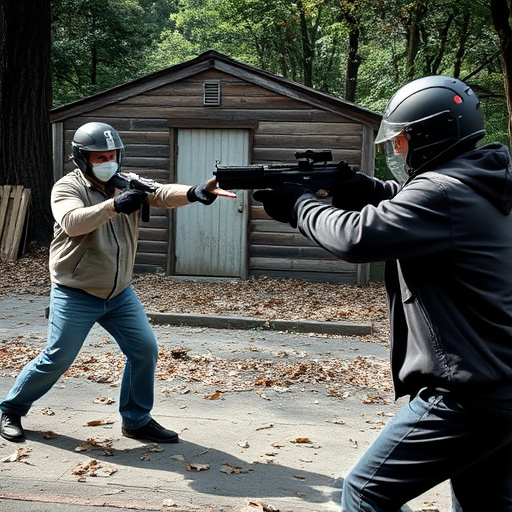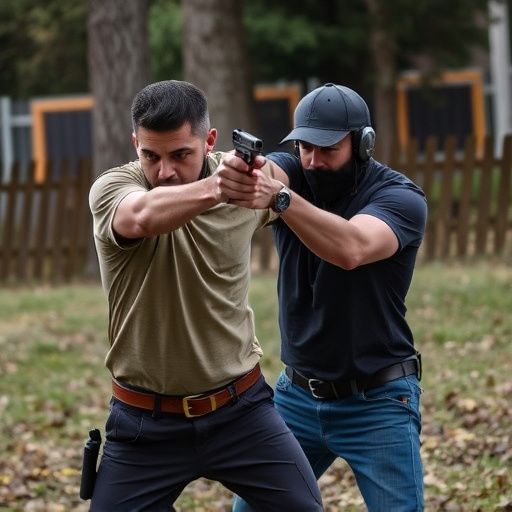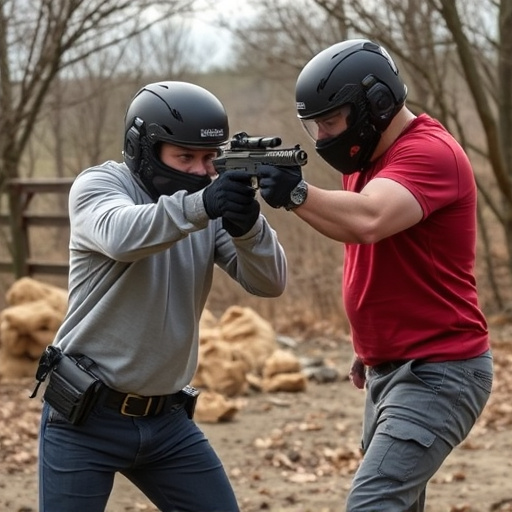Stun guns (tactical electronic control devices) use high-voltage, low-current shocks (5000–15000 volts, <1 ampere) to disable targets without permanent damage. Manufacturers meticulously balance electrical parameters for effectiveness and safety, with proper maintenance and manual understanding crucial. Modern stun guns incorporate advanced mechanical and electrical safety mechanisms, such as safety switches and smart technology, to prevent misfires. They undergo rigorous testing and certifications to meet industry standards for reliability and performance, including misfire resistance. Regular cleaning, battery inspection, adherence to safety guidelines, and verifying electrical specifications against manufacturer standards are essential for optimal performance and reduced risk of misfires.
In today’s world, personal safety is paramount. Stun guns, as a non-lethal self-defense tool, have gained popularity. Understanding the intricate stun gun electrical specifications is crucial for their effective and safe use. This article delves into the essential aspects of stun gun misfire prevention, exploring advanced safety features, testing standards, and maintenance practices. By examining these key areas, users can ensure reliable protection while minimizing the risk of accidents.
- Understanding Stun Gun Electrical Specifications
- Misfire Prevention Mechanisms: An Overview
- Advanced Safety Features in Modern Stun Guns
- Testing and Certification for Misfire Resistance
- Best Practices for Stun Gun Maintenance and Use
Understanding Stun Gun Electrical Specifications

Stun guns, also known as tactical electronic control devices (ECDs), operate by delivering high-voltage, low-current electric shocks to incapacitate a target. Understanding their electrical specifications is crucial for ensuring effective and safe use. The primary electrical parameter to consider is voltage, which typically ranges from 5,000 to 15,000 volts, measured in peak or pulse voltage. This high voltage is designed to disrupt muscular control and cause temporary paralysis.
Current, another critical factor, usually flows at low amperage, often below 1 ampere. The stun gun delivers this current through metal prongs or probes that make contact with the target’s body. Manufacturers carefully engineer these electrical specifications to balance effectiveness with safety, ensuring the device does not cause permanent damage while neutralizing an assailant. Proper maintenance and understanding user manuals are essential to guarantee optimal performance and minimize the risk of a stun gun misfire.
Misfire Prevention Mechanisms: An Overview

Stun guns, also known as electronic control devices (ECDs), are designed to incapacitate individuals through electric shocks, offering a non-lethal self-defense option. Misfire prevention is a critical aspect of their design, ensuring that the device deploys as intended in emergency situations. These weapons utilize advanced electrical specifications and safety mechanisms to prevent accidental discharges and false alarms.
The primary focus of misfire prevention features is to ensure user safety and reliability. One common method involves incorporating specialized circuits that detect the presence of a target or the proper application of pressure on the trigger. These sensors can distinguish between intentional use and potential errors, such as contact with metal objects or accidental touches, preventing unwanted shocks. Additionally, some stun guns employ smart technology, like automated self-diagnostics, to monitor internal components, further reducing the risk of misfire due to mechanical failures.
Advanced Safety Features in Modern Stun Guns

Modern stun guns are equipped with advanced safety features designed to prevent accidental misfires and ensure user safety. One of the key elements is the inclusion of mechanical and electrical safety mechanisms. These devices often incorporate a safety switch or lock that must be activated by the user before the stun gun can deliver a shock, preventing unintended activation.
Moreover, stun guns feature sophisticated electrical specifications, such as controlled output currents and voltage levels, which are optimized to incapacitate without causing severe harm. Advanced microprocessors regulate the energy delivery, ensuring precise and safe shocks. These features, combined with intuitive design elements, make modern stun guns safer and more reliable than ever before, catering to both personal defense needs and regulatory compliance.
Testing and Certification for Misfire Resistance

Stun guns, like any electrical device, are subject to various safety standards and certifications to ensure their reliability and performance. Testing for misfire prevention is a critical aspect of these specifications. Manufacturers conduct rigorous tests to guarantee that their stun guns can withstand accidental discharges and prevent unintended injuries. These tests often involve simulating various scenarios, including impact resistance, water immersion, and extreme temperature conditions, in addition to assessing the gun’s ability to discharge correctly under controlled conditions.
Certifications from reputable testing agencies play a vital role in confirming the safety and effectiveness of stun guns. Look for products that bear the mark of recognised testing bodies, ensuring they meet or exceed industry standards for electrical specifications and misfire resistance. This certification process helps consumers trust the device’s performance, providing peace of mind when carrying and using a stun gun for personal safety.
Best Practices for Stun Gun Maintenance and Use

Maintaining and using your stun gun properly is paramount for ensuring its reliability in critical situations. Regular cleaning and inspection are essential practices to prevent misfires and ensure optimal performance. Start by checking the device’s electrical specifications, including voltage and current output, to verify it meets the manufacturer’s standards. Clean the stun gun with a soft cloth to remove any visible debris or buildup, paying special attention to the contact points where energy flows. Inspect the battery for signs of wear or corrosion and replace it if necessary, as a faulty battery can lead to unexpected malfunctions.
When using your stun gun, always follow safety guidelines strictly. Ensure proper grip and target practice to maximize effectiveness while minimizing the risk of injury. Keep the device in a protective case when not in use to avoid accidental activation. Regular maintenance and adherence to best practices will significantly reduce the chance of misfires, making your stun gun a reliable personal safety tool.
Stun guns, despite their reputation, are sophisticated devices with intricate electrical specifications that contribute to their effectiveness. Understanding these specifications, combined with modern misfire prevention features and safety protocols, ensures users can rely on their stun guns as a safe and reliable self-defense tool. Regular maintenance and adherence to best practices further mitigate the risk of misfires, making them an essential accessory for personal security. By staying informed about stun gun electrical specifications and embracing advanced safety features, users can maximize their protection while minimizing potential risks.
